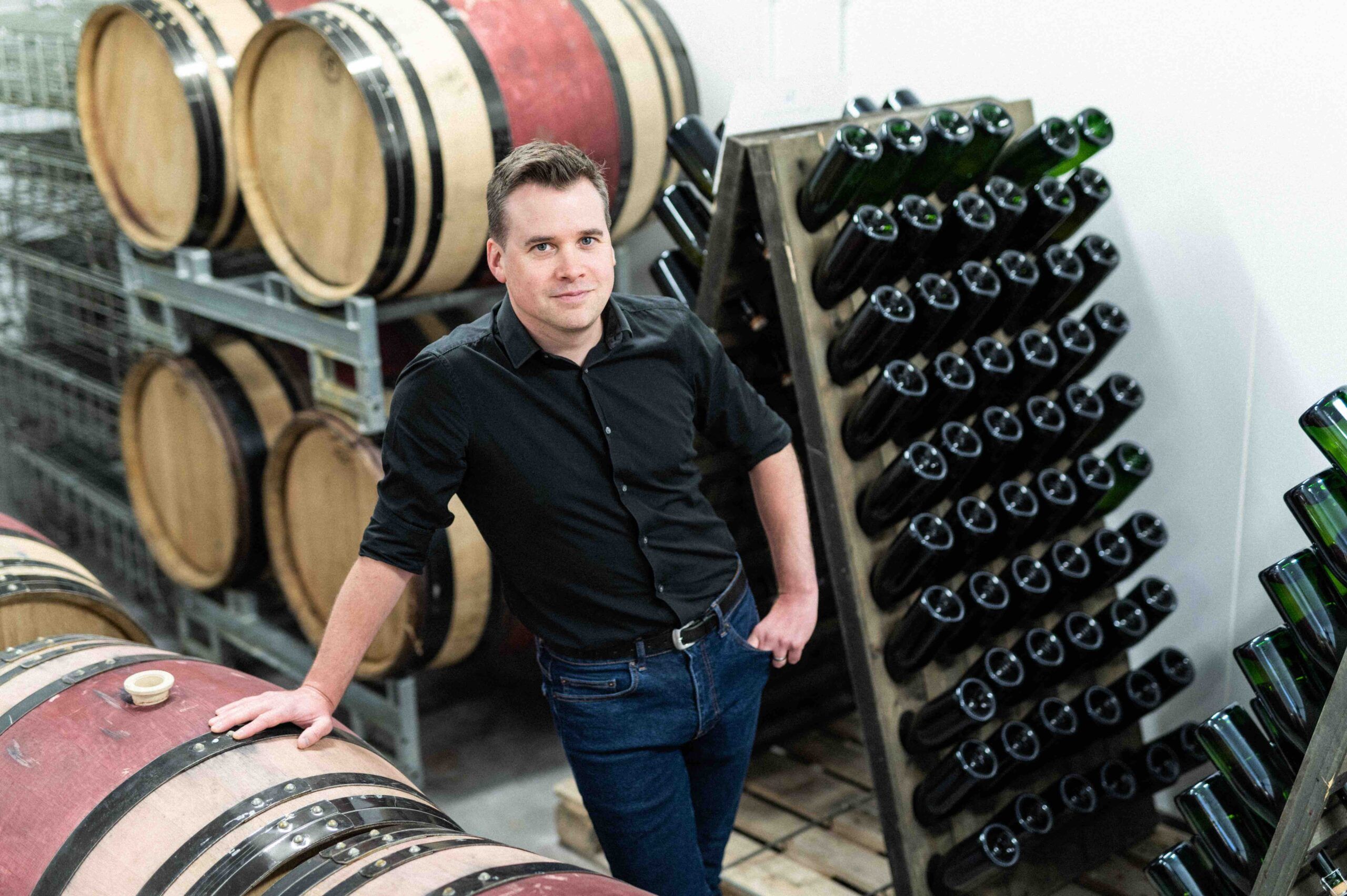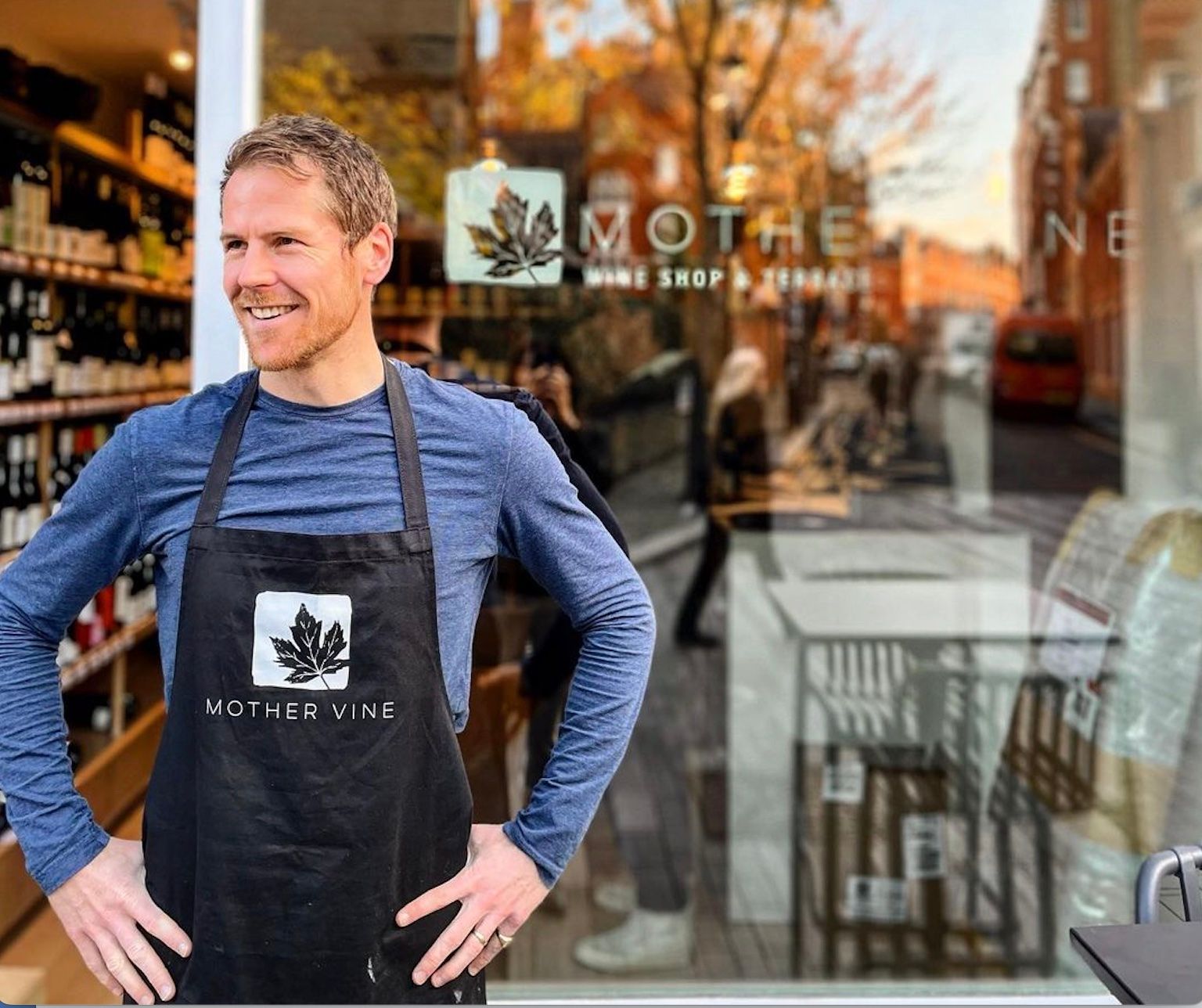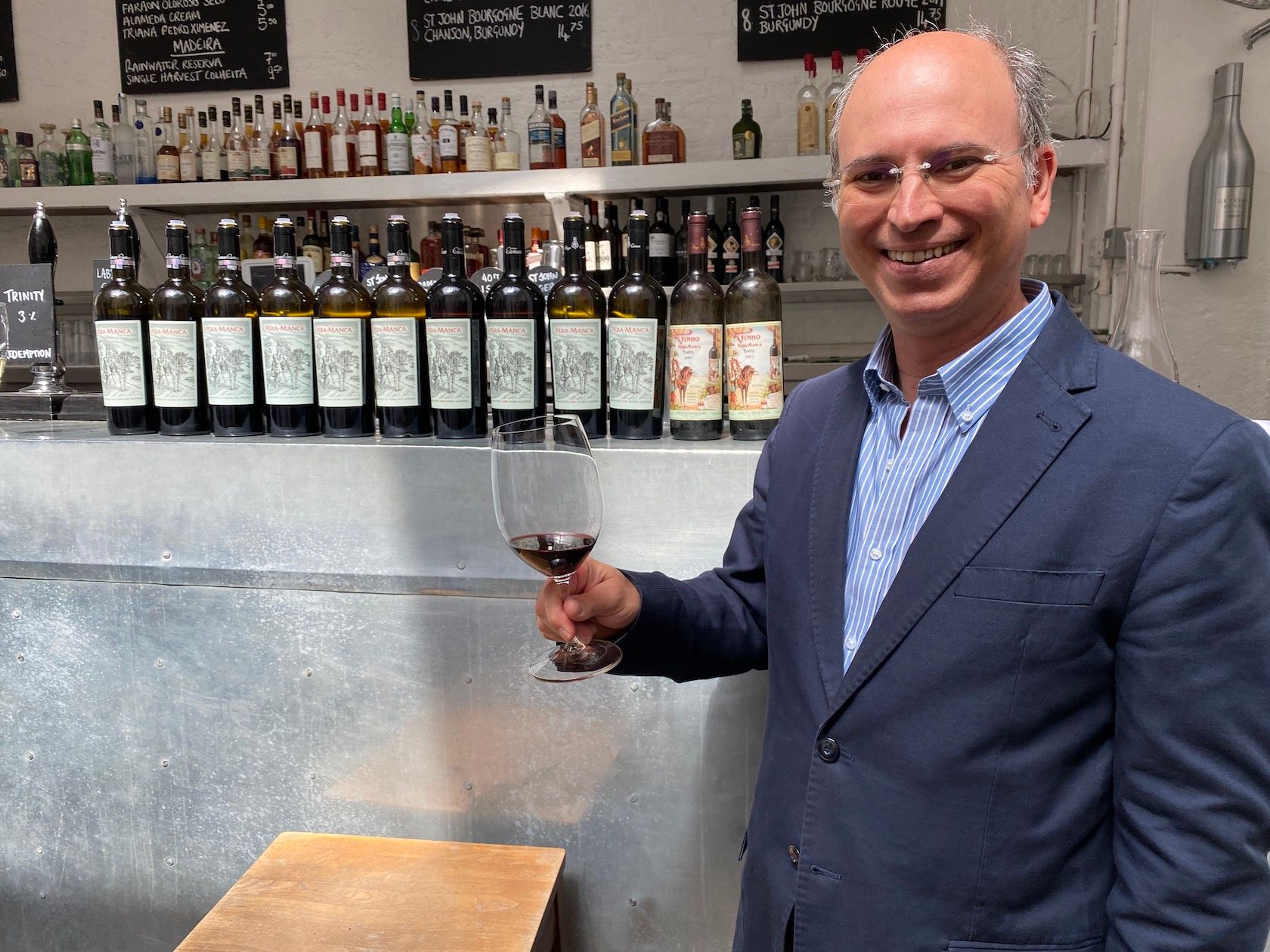“We have a quality over quantity approach with our growers, as markets will only flourish with consistent quality,” is how Lyme Bay Winery hopes to build its reputation as a leading producer of English still – and sparkling – wines.
Tell us a little background to yourselves and how you started to make wine?
James: LBW Drinks Ltd was set up in 1993 by Nigel Howard, with the ambition of making a high-quality west country cider. However, though the industry was still in its infancy, he also harboured the ambition to grow English wine. This was driven by a huge passion for still wines, specifically New Zealand Sauvignon Blancs, which was shared with myself when I was then the winery manager. It took until 2009 until a good vineyard location was found, and the right team, capability and finance was all in place to take on the challenge with enough ambition. Since then, we have continued to strive to innovate, push boundaries, and explore what’s truly achievable in terms of still and sparkling wines produced in the UK.
What do you see as your key point of difference?
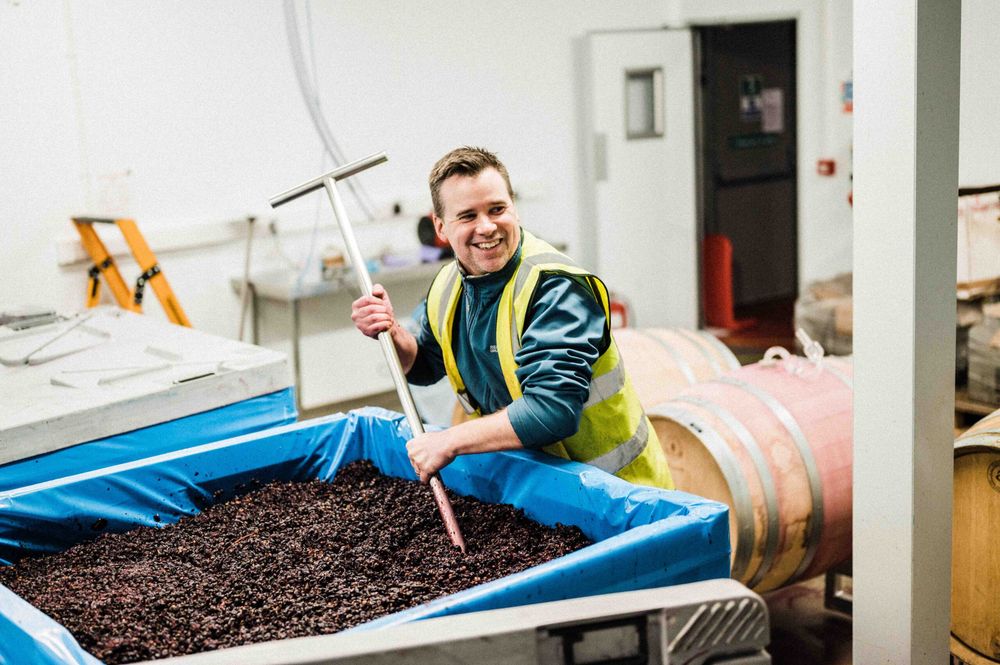
Lyme Bay’s managing director James Lambert is also the chief winemaker
Paul: Whilst we have an exceptional range of sparkling wines and are honoured to be working with Michael Caines and Lympstone Manor to make their sparkling wine, our core focus is on the development of English still wines. This is underpinned by our approach of the best wines from the best grapes from the best growers. We do not own our own vineyards and instead choose to source our grapes from experienced growers in different geographical areas that have the right microclimate and soils for growing outstanding fruit. We have a quality over quantity approach with our growers, as markets will only flourish with consistent quality, so as our grower partners focus on growing we can then focus on winemaking and ensure that we deliver outstanding wines to market.
How have you built the business up over the years?
James: LBW Drinks is a truly unique business, with a broad range of award-winning drinks primarily in niche categories. We are the UK’s largest producer of fruit wines, and also the UK’s largest producer of meads. Alongside our founding product (cider), these ranges and others have allowed us to build a UK-wide distribution of products to off and on-premise customers, together with building a successful ecommerce platform with our own website. TheLyme Bay Winery cellar door is also an established Devon stop-off where as well as sampling our range of English still and sparkling wines, visitors can try ciders, spirits, meads and more.
You now have vines in five different areas across the south of England – why is that and what do the different vines offer you?
James: Several reasons really, but primarily driven by quality and risk mitigation in equal measure. The west of the UK can grow some extremely good quality grapes – Bacchus for instance can exhibit some beautiful citrus flavours, and we get several cooler climate varieties from local vineyards including Pinot Gris and Seyval Blanc. However, we also experience higher levels of rainfall than Essex and Kent, meaning achieving the highest levels of ripeness required for still Pinot Noir or Chardonnay is very difficult. In a nutshell this is why it’s important to us. Bacchus, for example, tends to give us riper, more tropical notes from our east of England sites, and more citrus-driven qualities from the west.

Lyme Bay sources grapes from growers across the West Country
Together, the mixed sourcing provides us with unique blending opportunities that give us our trademark complexity and intensity. Likewise, by working with multiple sites we have been able to pinpoint specific growing areas that give us the highest quality grapes for still wines, consistently. This has allowed us to pioneer red wine production in the UK with Pinot Noir, together with increasing high quality still chardonnay production.
This year has also been challenging, with growers first hit by late spring frosts, which was followed by higher than usual disease pressure owing to the wet summer. Some sites have fared better than others, so our approach in seeking out the best sites, working with our partner growers to focus on quality, not quantity, and setting out a long-term strategy in the shape of a long-term supply agreement, meant that we have still been able to bring in exceptional fruit this year.
How is this year’s harvest going in terms of volume and quality?
James: As a very top-line summary: yields are down, sugars are lower than last year, but quality is still extremely high in the best sites. Grapes of the right clones from the right sites are showing exceptionally exciting physiological ripeness and depth of flavour. This is down to the extremely long hang time grapes have received this year due to the cooler than usual growing season.
Warmth and sun drives sugar accumulation and we’ve seen less of both this year, meaning potential alcohols are fractionally lower than 2020. However, it’s the time that bunches are left to hang that determines the physiological ripeness we’re after – this is where flavours develop beautifully, seeds and stems ripen fully (essential for red wine production), and acids fall gradually.
We are extremely excited for this vintage as a result, and it also reminds us of two key points: first, this is why we love winemaking as every year brings its own unique set of challenges. Second, you can only achieve the all-important hang time on sites in the best locations, which are well managed. Any shortcomings get found out in a year like this.
How does it compare to previous years?
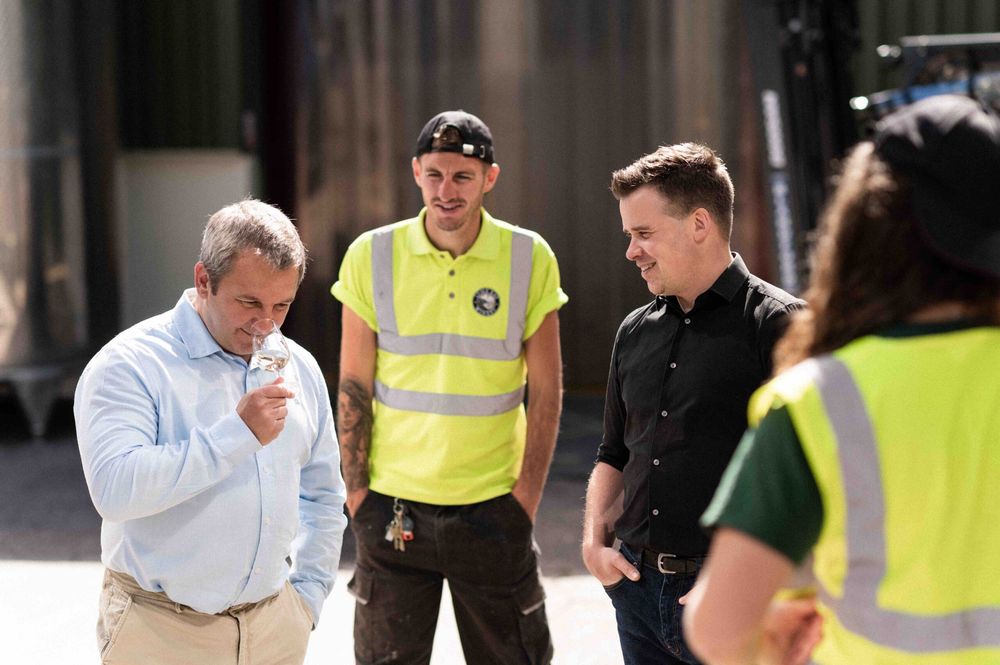
Quality above all else is key for Lyme Bay Winery
James: Slightly lower sugars, but really exciting levels of physiological ripeness and beautiful flavours. The reds will be slightly less intense colour-wise, but we can’t wait to see these wines as they develop. 2021 has been challenging on many fronts, but we should be rewarded with some magnificent wines. Watch this space.
What is the mix of wines you make – still vs sparkling – and is that ratio changing and why?
Paul: Over the last few years our volume mix has been about 85% still to 15% sparkling and this is remaining fairly constant as we are seeing growth across both categories for English wine especially since lockdown. Whilst we see a solid opportunity for sparkling wine growth, we see a greater opportunity in the still wine market especially as access to still wine clones of Pinot Noir increases after recent plantings which will help to drive this market. We feel that we have a pretty good balance and would like to keep the ratios fairly constant especially as high-quality sparkling wine can offer a fantastic halo effect for consumer.
You have just signed a distribution deal with Bancroft Wiues. Why did you want to work with them and what do you hope they can help you achieve?
Paul: We felt that we had a meeting of minds with Bancroft and it could give access to channels of distribution, especially the on-trade that we are not well positioned to service. They have an excellent English sparkling wine partner, Exton Park and we are looking to complement that as its still English wine provider. Its team is exceptionally knowledgeable and whilst we have excellent distribution and partnerships in the West Country we are looking to develop the brand further afield with a core focus on London, Manchester, Glasgow and other cities across the country. It makes sense to be part of a wine specialist portfolio so that customers can have a more efficient shop across a number of countries and reduce deliveries and complexity too.
What are the key channels that you look to sell your wine in and is that changing?
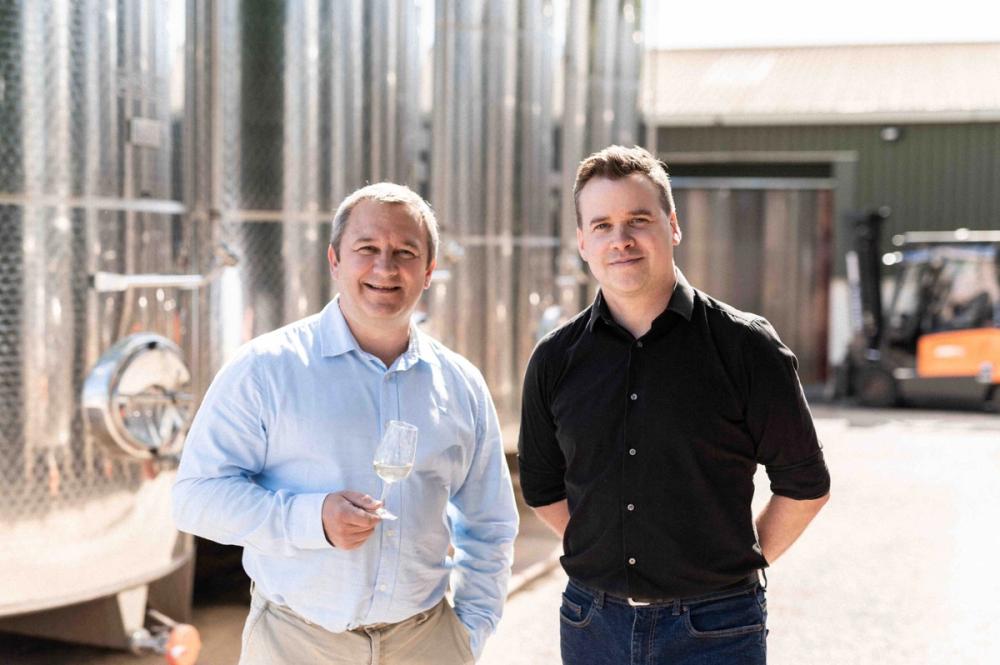
James Lambert, right, with head of sales and marketing, Paul Sullivan
Paul: English wine operates at a premium and so it is the job of the whole supply chain to explain to the drinker why it is premium and worth the premium. On this basis we need channels that can offer a hand sell for our wines and extol the benefits. So we have a key focus on the independent and specialist retail trade and the on-trade where products can be enhanced with a face to face conversation. Equally, over the last year consumers have moved to online purchasing for premium products, and we are looking to partner with customers that can add value through online communication and education of the customer. English wine is at a stage where communication to the consumer is key to help understand the positioning.
You also have your own sales team – how will that work differ and complement what Bancroft can do for you?
Paul: We have an extensive range of other products, Mead, Rum, Fruit Wines, Traditional ciders and Liqueurs which would create noise in the Bancroft portfolio and work in channels that are mutually exclusive to English wine in many cases. Our sales team will focus on developing customers who have this portfolio at the core of their business and where it makes logistical sense to add our wines they can do that. Equally, we have a team on the ground who are able to act as brand ambassadors for our English wines and generate leads for Bancroft and support events and marketing.
What do you see as the future for English still wines – how will they be able to gain traction
James: English still wines are already gaining traction. Cellar door visits, sampling and purchases are up dramatically and web traffic is growing as consumers discover the category. Traction is about working with the core target audience and not trying to be all things to all people. Launching our pinot noir will assist in developing the category as so many pinnacle wines are red and English wine needs this to access a wider consumer base. Communication is key and telling the story of English wine and what sets it apart constantly and consistently is key.
What do you see as the sweet spot for pricing for English still wines?

The Lyme Bay range
Paul: It is almost too early to define a sweet spot for English still wines. The category is young and developing and there are more and more plantings coming online, but the climatic growing conditions are marginal and so there is huge opportunity for vintage yield variations. The key is to ensure that the wines that are made are of the highest possible quality and priced accordingly to the challenges of the vintage. Making wine to a price point will always involve compromise and we don’t want to compromise if we are setting out a quality stall.
And for your wines – what price position do you have?
Paul: The Lyme Bay range starts at £15 retail at the moment and will offer a range including single vineyard selection parcels of red up to £45. Whilst all premium we have different tiers of wine to reflect different occasions for the consumer. Our new labels for our still wine portfolio has been re-designed to reflect this.
Exports – how it is growing and what are key to success in export?
Paul: Exports are growing steadily. The primary focus for English wine has been sparkling and this has developed a small foothold in a number of markets. We are experiencing some success with the still wines, but it is early days. The key to success is a clear point of difference, an unswerving focus on quality, understanding the needs of the markets you are selling too, working with like-minded partners and developing business over time not trying to take over the world tomorrow. Consistent and persistent will win through as the reputation of English wine spreads across the World and more so now that the UK tourism market can re-open and travellers can visit the winery to try our wines.
- If you want to find out more about Lyme Bay Winery then go to its website here.
